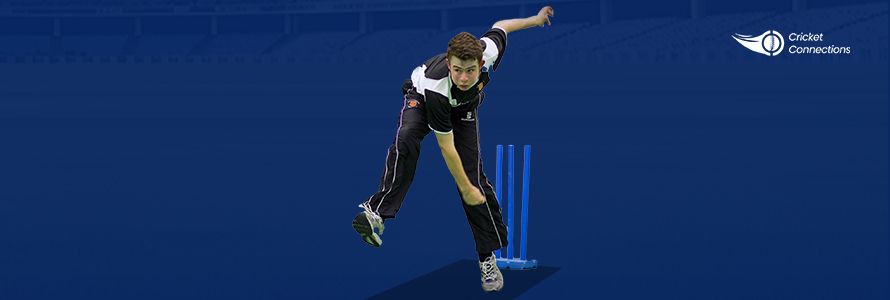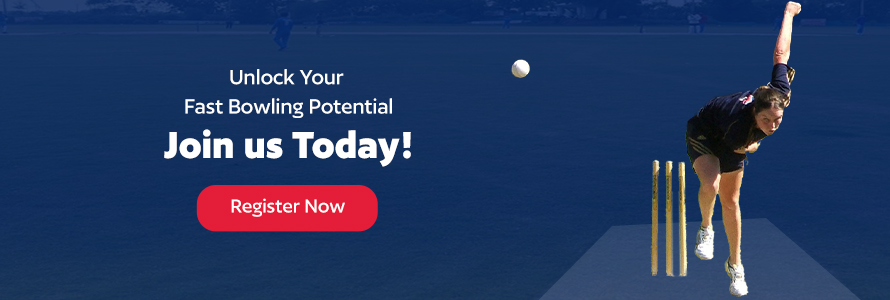5 Min read
14 April 2025
Fitness Tips for Young Cricketers | Cricket Training for Beginners
Cricket Connections

Cricket has seen a significant evolution in the fast bowling department, with bowlers achieving incredible speeds and mastering a variety of techniques to outfox batsmen. Fast bowling is not just about raw speed; it encompasses accuracy, movement, and the ability to read the game. At Cricket Connections, we believe in helping you master the art of fast bowling with the latest and most effective training tips.
Fast bowling is a critical element of cricket, providing the pace and aggression needed to unsettle batsmen. It involves delivering the ball at high speeds, often exceeding 90 mph, with various techniques to swing and seam the ball, making it challenging for the batsman to score runs.

Fast bowling demands a high level of physical fitness. Strength training, particularly focusing on the legs, core, and upper body, is essential. Exercises like squats, deadlifts, and bench presses help build the necessary muscle groups.
Endurance training through running, cycling, or swimming ensures that bowlers can maintain their performance over long spells. Interval training, which alternates between high-intensity and low-intensity exercises, mimics the on-field demands of fast bowling.
A smooth, repeatable bowling action reduces the risk of injury and enhances performance. Focus on maintaining a strong, stable front arm and a high, straight follow-through. Drills that reinforce these aspects help in building muscle memory.
The run-up should be consistent and measured. A good run-up provides momentum and balance, crucial for generating speed and accuracy. Marking your steps and practicing regularly ensures consistency.
Swinging the ball can be a lethal weapon. Practicing with different grips and learning to control the seam position helps in mastering both conventional and reverse swing. Drills that focus on wrist position and seam orientation are beneficial.
Seam movement depends on the position of the seam upon delivery. Practicing with a focus on wrist stability and seam position ensures effective seam movement. Using a two-piece ball during practice can exaggerate seam movement, helping bowlers understand the nuances better.
Understanding the batsman’s weaknesses and the match situation is crucial. Watching footage of opponents and learning to set fields accordingly can give a bowler an edge.
Fast bowling can be mentally draining. Techniques like visualization, where you imagine bowling a perfect delivery, and mindfulness, which focuses on staying present and focused, can be helpful.
Using technology to analyze your bowling action can identify areas for improvement and prevent injury. High-speed cameras and motion capture systems provide detailed insights into your technique.
Fast bowlers should focus on strengthening specific muscle groups that are heavily utilized during bowling. Exercises targeting the rotator cuff, forearm, and shoulder muscles can prevent injuries and improve performance.
A balanced diet rich in proteins, carbohydrates, and fats, along with proper hydration, supports intense training sessions and recovery. Supplements like whey protein, creatine, and amino acids can be beneficial when used correctly.
Fast bowlers are prone to injuries like stress fractures, shoulder impingements, and muscle strains. Understanding these injuries and taking preventive measures is crucial.
If injured, following a structured rehabilitation program with a focus on gradual return to bowling is essential. Working with a physiotherapist who understands the demands of fast bowling can expedite recovery.
Fast bowlers must also be adept fielders. Drills that focus on quick reflexes, catching, and ground fielding enhance overall performance.
Cone drills, ladder drills, and shuttle runs improve agility, helping bowlers change direction quickly and efficiently.
Setting short-term and long-term goals helps in tracking progress. Goals should be Specific, Measurable, Achievable, Relevant, and Time-bound (SMART).
Regularly assessing your performance through video analysis, feedback from coaches, and self-evaluation helps in identifying areas of improvement.
Mastering the art of fast bowling requires a combination of physical fitness, technical proficiency, mental toughness, and continuous learning. By following the training tips outlined in this guide, you can enhance your skills and become a formidable fast bowler. At Cricket Connections, we are committed to providing the latest insights and training techniques to help you excel in the field. Keep practicing, stay focused, and remember that every great bowler started with the basics.
For more tips and detailed guides, visit Cricket Connections.
Dive deeper into captivating cricket content.

